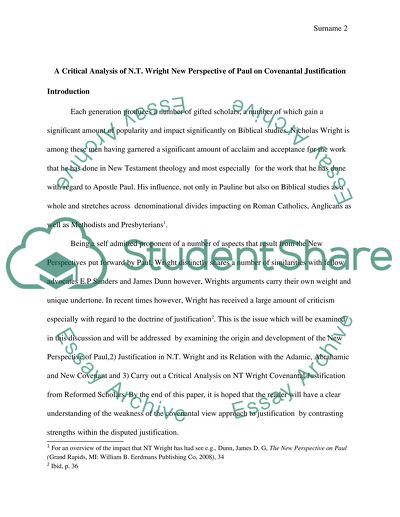Cite this document
(“A Critical Analysis of N.T. Wright New Perspective of Paul on Research Paper”, n.d.)
A Critical Analysis of N.T. Wright New Perspective of Paul on Research Paper. Retrieved from https://studentshare.org/religion-and-theology/1689712-a-critical-analysis-of-nt-wright-new-perspective-of-paul-on-covenantal-justification
A Critical Analysis of N.T. Wright New Perspective of Paul on Research Paper. Retrieved from https://studentshare.org/religion-and-theology/1689712-a-critical-analysis-of-nt-wright-new-perspective-of-paul-on-covenantal-justification
(A Critical Analysis of N.T. Wright New Perspective of Paul on Research Paper)
A Critical Analysis of N.T. Wright New Perspective of Paul on Research Paper. https://studentshare.org/religion-and-theology/1689712-a-critical-analysis-of-nt-wright-new-perspective-of-paul-on-covenantal-justification.
A Critical Analysis of N.T. Wright New Perspective of Paul on Research Paper. https://studentshare.org/religion-and-theology/1689712-a-critical-analysis-of-nt-wright-new-perspective-of-paul-on-covenantal-justification.
“A Critical Analysis of N.T. Wright New Perspective of Paul on Research Paper”, n.d. https://studentshare.org/religion-and-theology/1689712-a-critical-analysis-of-nt-wright-new-perspective-of-paul-on-covenantal-justification.


